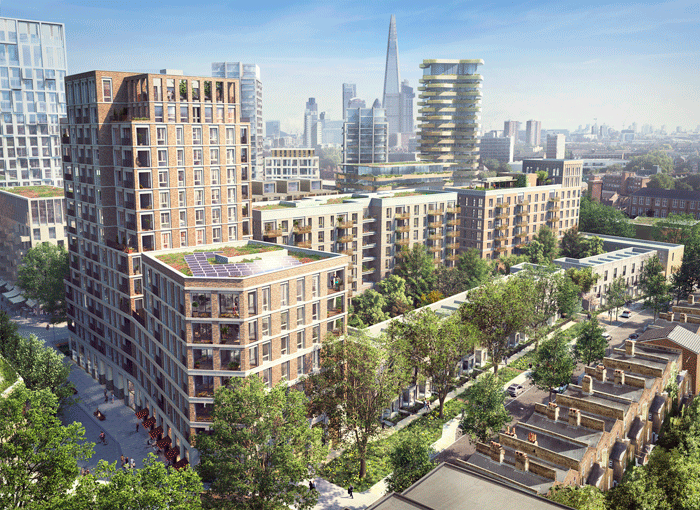Footage of real-life actors merged with 3D architectural models to create slick a visualisation reminiscent of a short film.
Elephant Park is a new residential site south of the river Thames in London’s borough of Elephant and Castle.
Designed by MaccreanorLavington Architects, the residential project features a collection of modern buildings that range from three to 16 storeys in height, surrounded by communal green space.
Cityscape Digital produced 15 stills and a four-minute film for the project. It worked with a film crew and green-screen technology to add in real actors to the virtual building.
MaccreanorLavington Architects provided 3D SketchUp models for the main structures, and 2D landscaping drawings, plus further details in 2D CAD. Once the 3D models were built, with details, textures and colours, the green-screen footage could be dropped into its virtual surroundings.
A motion capture system was used to track the cameras that recorded the live footage. This data was fed into the 3D model, which could accurately reproduce the camera paths using the render camera angles, giving natural movement and scaling to the finished video.
By using real people the video was made less clunky than traditional fly-throughs with mannequins, and the resulting effect is more like a short film, something increasingly demanded by Cityscape’s clients.
Cityscape used 3ds Max and The Foundry’s Modo for modelling in 3D, and rendering, and composing animations in Nuke. Modo is most commonly used for animation and product design visuals. Cityscape designers reported a “simplistic, artistic feel” it brings to workflow.
Cityscape found that it can be faster for models to be built straight in Modo working from 2D plans, rather than trying to import and edit sketched 3D files from architects that may have walls or parts missing.
One of the drawbacks to working in Modo is that there is no model history to make detailed changes with. However, Cityscape is adamant this is a ‘quirk’ that the team has become used to within its workflow.
As a trade-off, Modo is popular with designers due to its ability to progressively preview light and textures in the rendering, being able to see what the designer is doing on the fly greatly speeding up the workflow.
If you enjoyed this article, subscribe to AEC Magazine for FREE






